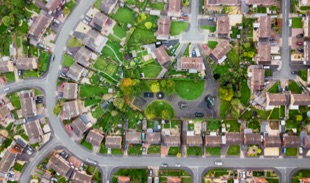The Built Environment
& Healthcare Practitioners
The Equity Orientation
& Healthcare Practitioners
The Equity Orientation
Human geography asserts that as spaces become places through the social production of place groups adorn the space with remembrances, imaginings, social relations, and the public assimilation of shared narratives [1-4]. The disruption of a physical space may result in negative impacts between groups and a place by interrupting emotional and social bonds that form the foundation between groups and places [5, 6].
Let’s consider the mechanisms that must work to create and disrupt connections between populations and places. In 1994 two sociologists wrote of economic and political systems that have -through years of underinvestment and neglect or harmful environmental uses- created marginalized (rural, urban) areas of undesirable land uses and unwanted people which breeds depression, hopelessness, alienation, self-abuse and/or abuse of peers, and violence[2, 7].
Again, the mechanisms of note are: (1) the social factors that bind people to places and (2) the role of economic and political systems in creating (over time) and equally alleviating the problems through better social and economic decisions. Community economic development is often considered a solution to fix places that have undergone a decline using government interventions (i.e., redesigning or putting in needed infrastructure) to stimulate investment, business development, and the building of new housing. However, in many cases this approach also stimulates gentrification and the displacement of indigenous, low-income residents as property values become unaffordable [8-10].
This raises the following questions of equity when dealing with the built environment:
How helpful is a community economic development strategy if it fails to account for the social stratification that occurs as a result of changes to the social landscape and economies of a place?
How can efforts to change the built environment in low wealth communities highlight that economic development by one group may be gentrification -the disruption and eradication of social and economic ties- to another group?

- 1. Heynen, N., H.A. Perkins, and P. Roy, The political ecology of uneven urban green space the impact of political economy on race and ethnicity in producing environmental inequality in Milwaukee. Urban Affairs Review, 2006. 42(1): p. 3-25.
- 2. Fullilove, M.T., Psychiatric implications of displacement: Contributions from the psychology of place. The American Journal of Psychiatry, 1996
- 3. Fullilove, M.T., Root shock: How tearing up city neighborhoods hurts America, and what we can do about it. 2016: NYU Press.
- 4. Low, S.M., Towards an anthropological theory of space and place. Semiotica, 2009. 2009(175): p. 21-37.
- 5. Lewicka, M., Place attachment: How far have we come in the last 40 years? Journal of Environmental Psychology, 2011. 31(3): p. 207-230.
- 6. Scannell, L. and R. Gifford, Defining place attachment: A tripartite organizing framework. Journal of Environmental Psychology, 2010. 30(1): p. 1-10.
- 7. Greenberg, M. and D. Schneider, Violence in American cities: young black males in the answer, but what was the question? Social Science & Medicine, 1994. 39(2): p. 179-187.
- 8. Andress, L., Forgetting health disparities: A one size fits all narrative. Cogent Social Sciences, 2017. 3(1): p. 1279761.
- 9. Madden, D. Gentrification doesn’t trickle down to help everyone. 2013; Available from: http://www.theguardian.com/commentisf ree/2013/oct/10/gentrification-not-urban- renaissance.
- 10. Anderson, B., Imagined communities: Reflections on the origin and spread of nationalism. 2006: Verso Books.
